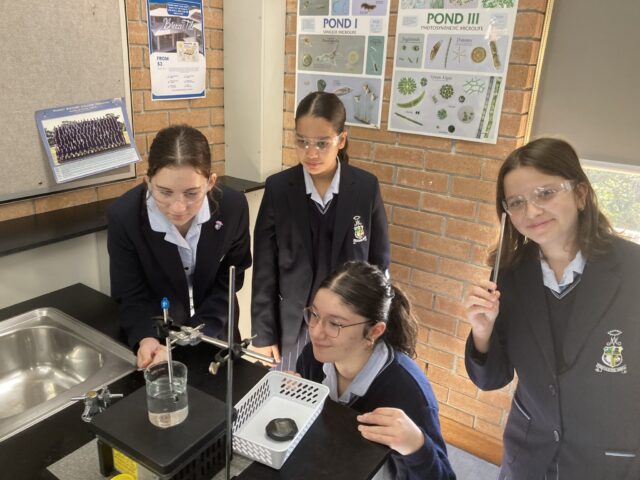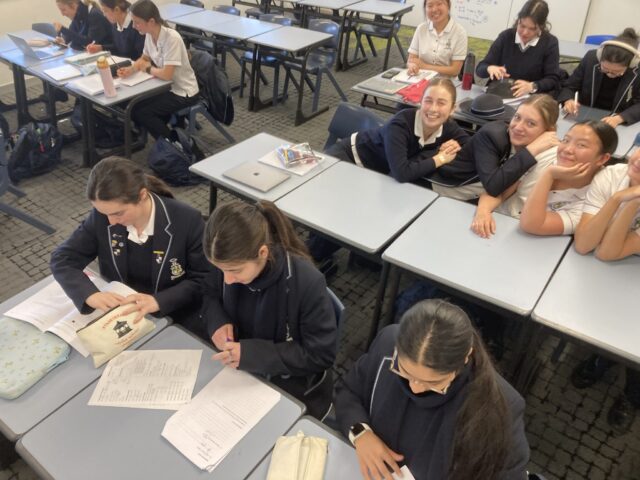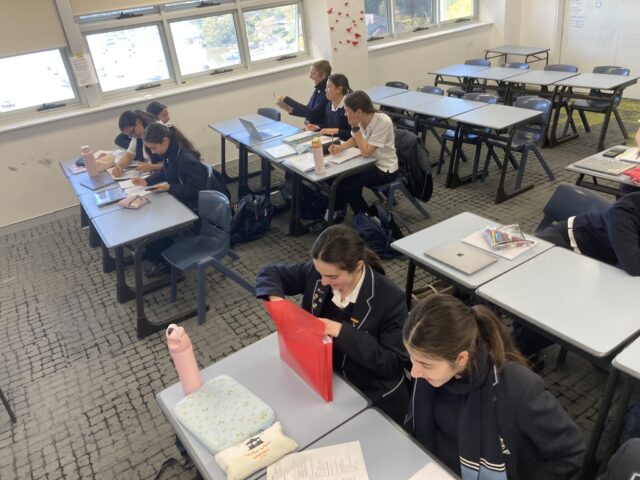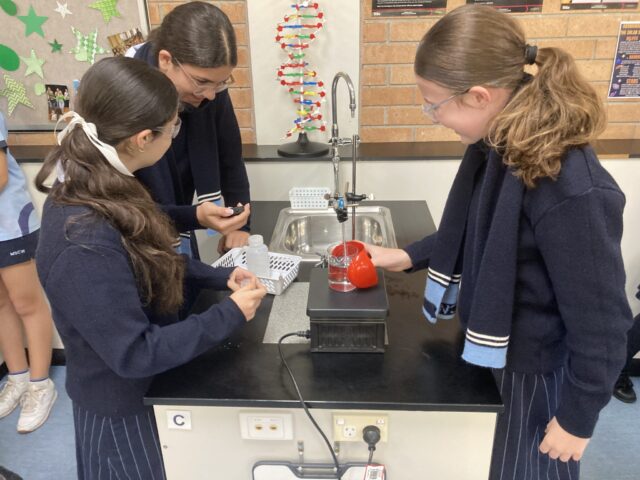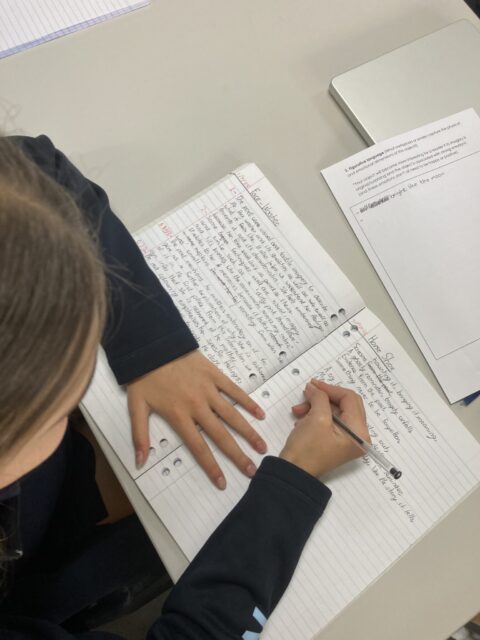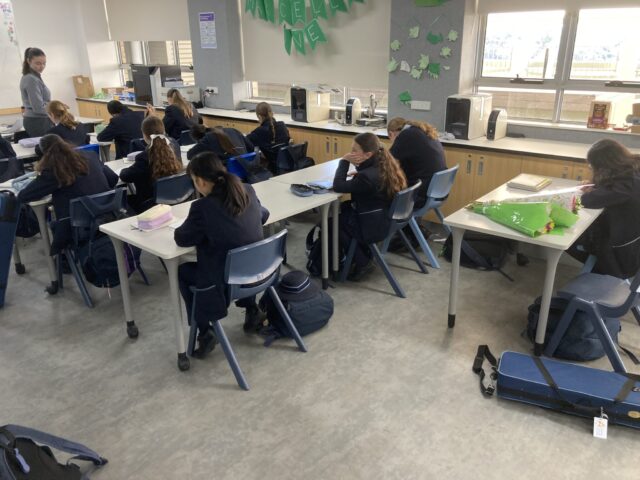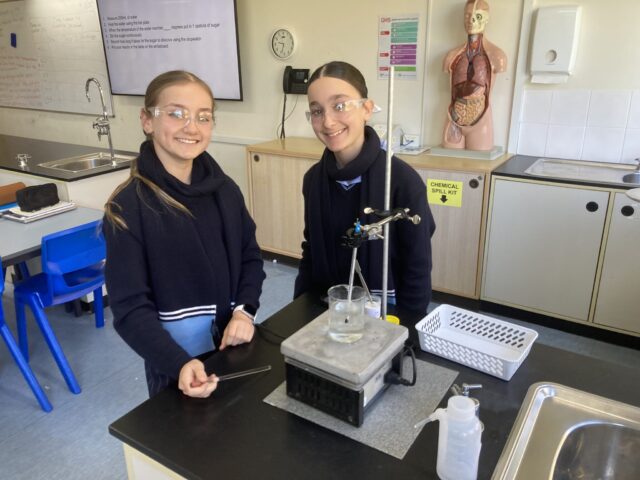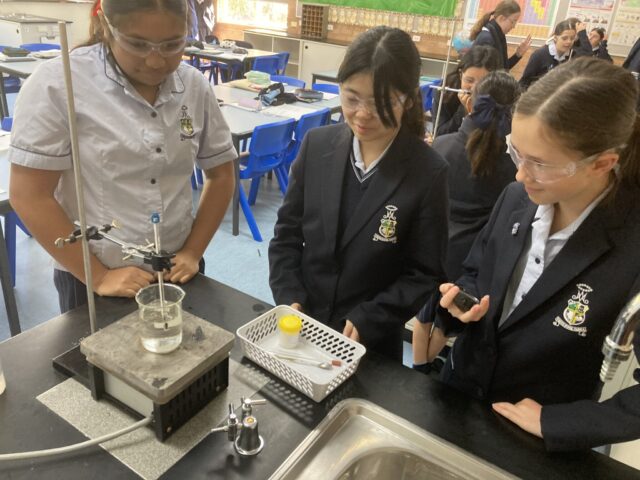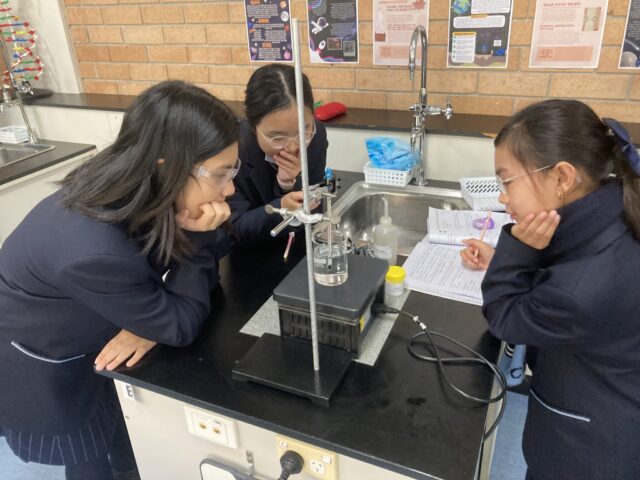Gifted and Talented Report
MSCW girls really can do anything!
How wonderful to see the array of talent in the musical – my congratulations to all involved and for sharing your talents with our community. It was so interesting to see different aspects of their talents – so many well rounded young ladies.
Year 7 Newman classes have well and truly adjusted to high school and from my visits are enjoying being challenged by their deeper learning. I share with you photos of 7-4 conducting a science experiment and 7-1 engaged in a poetry lesson. I was so impressed by their vocabulary and descriptive language!
Our best wishes to the Year 11 accelerated Maths students who will sit the Advanced Maths Trial HSC exam with the Year 12 cohort. These students were accelerated from Year 9 and have done a compacted curriculum- no mean feat! These students are up to 2 years younger than some of the Year 12 students. It’s an intense pathway but they have consistently shown diligence and grit – you got this girls!
MSCW girls shine in dance! Congratulations to sisters Isabella and Amelia! Both sisters qualified for & competed at the ATOD Nationals championships in Melbourne and BOTH were awarded 1st place for the Jazz category! This was history making- sisters winning the same category in different age groups! Isabelle amazingly also won her Hip Hip section and placed 4th in Contemporary. Amelia also placed second in Tap which was phenomenal.
There is such an array of talent across all domains at MSCW. I love hearing about their successes!
I take this opportunity to share also current research around gifted and high potential learners and definitions to help assist parents in understanding these distinctions. The information comes from the latest policy from the Department of Education. Through knowing these terms, students have a greater understanding of themselves. At MSCW we are so fortunate to be able to fund two Newman classes in Years 7- 10 to ensure we capture the array of potential- not just the highly gifted.
Domains of potential
The domains of potential describe the four broad categories of natural abilities found in Françoys Gagné’s adapted model of Differentiated Model of Giftedness and Talent DMGT 2.0 (2009). These definitions apply to all students, including high potential and gifted students.
The domains of potential may not be mutually exclusive and are highly influenced by one another.
- Creative domain – refers to natural abilities in imagination, invention and originality.
- Intellectual domain – refers to natural abilities in processing, understanding, reasoning, and the transfer of learning.
- Physical domain – refers to natural abilities in muscular movement and motor control.
- Social-emotional – refers to natural abilities in self-management and relating to and interacting with others.
Potential exists along a continuum, where differing degrees of potential require differing approaches and levels of adjustment and intervention.
High potential students
High potential students are those whose potential exceeds that of students of the same age in one or more domains. Their potential may be assessed as beyond the average range across any domain. They may benefit from an enriched or extended curriculum and learning opportunities beyond the typical level of students the same age.
Gifted students
Gifted students’ potential significantly exceeds that of students of the same age in one or more domains. Gagné and others commonly estimate 10% of students may be considered gifted. These students typically develop talent and achieve mastery notably faster than their age peers. They may benefit from an extended curriculum and learning opportunities significantly beyond the typical level of students the same age.
Highly gifted students
Highly gifted students’ potential vastly exceeds that of students of the same age in one or more domains. Highly gifted students have potential assessed in the top 1% or less of age peers. Highly gifted students may require specific and more significant curriculum adjustments to meet their learning and wellbeing needs.
Taken from: HPGE policy information
Mrs Colreavy’s Conundrum
Email: rachael.colreavy@syd.catholic.edu.au with your answer. Correct answers will win a prize.
Taken from: VERBAL REASONING PRACTICE TEST


